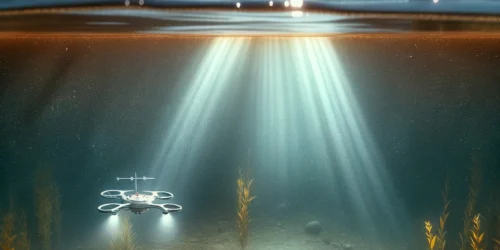Himalayan Disc Recovery Incident (1968)

On 11th April 1968, an event of extraordinary significance was recorded in the Himalayan regions of Ladakh, Nepal, Sikkim, and Bhutan. According to a classified CIA report, six “bright objects” were observed from February to March 1968, culminating in the recovery of a remarkable artifact. This object, described as a “huge metallic disc-shaped object with a six-foot base and four feet in height,” was located in a crater at Baltichaur, Nepal. This report, veiled in secrecy for decades, was finally declassified on 2nd April 2001, shedding light on the curious happenings in the skies over the Himalayas and opening up discussions on the nature and origin of the objects witnessed. The detailed account of these events is now available to the public, providing a glimpse into the mysterious aerial phenomena observed during that period.
This document, containing details of a peculiar object sighted and found within the Kaski region, was approved for release by the Central Intelligence Agency (CIA). The document, identified by the record number CIA-RDP81R00560R000100070007-8, is now publicly accessible and provides intriguing insights into the incident that occurred.
“Appeared to be north to south. A blazing object, flashing intermittently, accompanied by big, thunderous sound disintegrated over the Kaski region. A huge metallic disc-shaped object with a six-foot base and four feet in height was found in a crater at Baltichaur, five miles NE of Pokhara. Portions of a similar object were found at Talakot and Turepassal.”
Baltichaur, Talakot, and Turepassal are specific localities within Nepal, a country situated in South Asia, nestled in the lap of the Himalayas. Baltichaur lies just five miles to the northeast of Pokhara, which is Nepal’s second-largest city known for its stunning natural beauty, including views of the Annapurna mountain range. Pokhara itself is a significant hub for tourists and adventurers heading to the mountains, and it serves as a vital cultural and economic center with a population of over 400,000 residents.
The specific mountain range within the Himalayas near Pokhara, where the crash locations like Baltichaur, Talakot, and Turepassal are situated, is the Annapurna range. This range is part of the larger Himalayan mountain system and is known for its stunning peaks, including Annapurna I, which is the 10th highest mountain in the world. The Annapurna range is not only a significant geographical landmark but also a popular destination for trekkers and mountaineers from around the globe. The region around Pokhara offers breathtaking views of several Annapurna peaks, contributing to its reputation as a major tourist and adventure hub in Nepal.
The 1968 Himalayan incident, marked by the sighting of “bright objects” across Ladakh, Nepal, Sikkim, and Bhutan, and the subsequent recovery of a metallic disc in Nepal, remains a mystery. The declassification of CIA documents in 2001 brought this remarkable event to public attention, revealing a glimpse into the myriad of unexplained phenomena that have occurred in the shadow of the majestic Himalayas. The discovery of the metallic object in Baltichaur, near the Annapurna range, and the additional findings in Talakot and Turepassal, underscore the geographical and potentially extraterrestrial dimensions of this incident.



